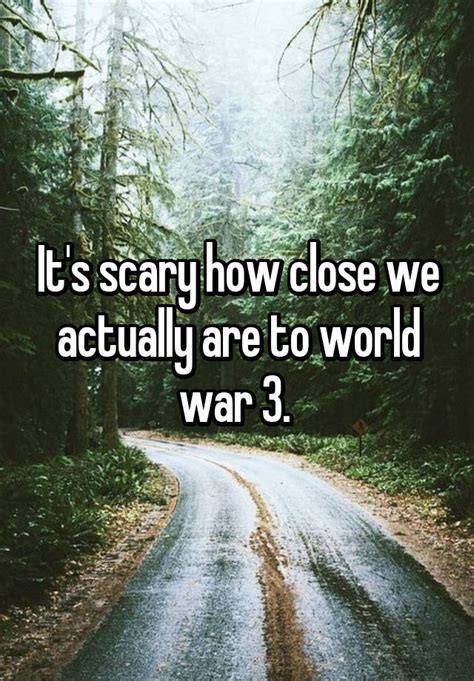How Close Are We to World War III? Navigating the Perils of Geopolitical Instability
The question, "How close are we to World War III?" weighs heavily on many minds. While no one possesses a crystal ball, analyzing current geopolitical tensions allows for a more informed assessment. This isn't about fear-mongering; it's about understanding the complex factors contributing to global instability and fostering a more nuanced discussion.
Understanding the Current Landscape:
Several key factors contribute to the perceived closeness of another global conflict:
-
The War in Ukraine: The ongoing conflict in Ukraine is undoubtedly a major flashpoint. The involvement of global powers, the potential for escalation, and the risk of miscalculation all contribute to heightened anxieties. Russia's actions and the West's response are constantly shifting the geopolitical landscape.
-
The Rise of Great Power Competition: The rivalry between the United States and China is intensifying, encompassing economic, technological, and military domains. This competition, coupled with regional conflicts, creates a volatile environment ripe for miscalculation and escalation. Tensions in the South China Sea and Taiwan's precarious position exemplify these growing concerns.
-
Nuclear Proliferation and Instability: The spread of nuclear weapons and the potential for these weapons falling into the wrong hands presents a significant threat. The ongoing instability in several regions, coupled with the unpredictable nature of certain regimes, increases the risk of nuclear conflict, either intentionally or accidentally.
-
Cyber Warfare and Information Operations: The increasing sophistication of cyber warfare and the spread of disinformation campaigns destabilize international relations and undermine trust. These invisible battlefields can easily escalate tensions and even trigger armed conflict.
-
Climate Change and Resource Scarcity: Climate change is exacerbating existing conflicts and creating new ones over scarce resources like water and arable land. These environmentally driven conflicts contribute to instability and heighten the potential for larger-scale conflicts.
Are We on the Brink?
While the current geopolitical climate is undoubtedly fraught with peril, predicting the likelihood of a world war is exceedingly difficult. There is no single, definitive answer. The probability hinges on multiple interconnected factors, including the actions and decisions of global leaders, the effectiveness of diplomatic efforts, and the resilience of international institutions.
What We Can Do:
Instead of focusing solely on the "how close" question, it's more constructive to focus on mitigating the risks:
- Promoting Diplomacy and Dialogue: Emphasizing peaceful resolution of conflicts through diplomatic channels is crucial.
- Strengthening International Institutions: Investing in and reforming international organizations that promote cooperation and peace is essential.
- Investing in Conflict Prevention and Resolution: Prioritizing conflict prevention initiatives and promoting effective conflict resolution mechanisms can help prevent escalation.
- Combating Disinformation: Addressing the spread of disinformation and promoting media literacy are crucial for maintaining stability.
- Addressing Climate Change: Taking decisive action on climate change will help alleviate resource scarcity and reduce environmental conflicts.
Conclusion:
The possibility of World War III remains a serious concern, driven by complex and interwoven factors. However, focusing solely on the imminence of war is unproductive. Instead, we should concentrate on building a more peaceful and stable world through proactive diplomacy, effective conflict resolution, and a commitment to international cooperation. The future is not predetermined; it is shaped by the choices we make today.
